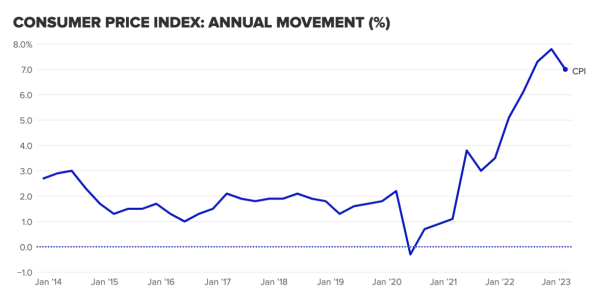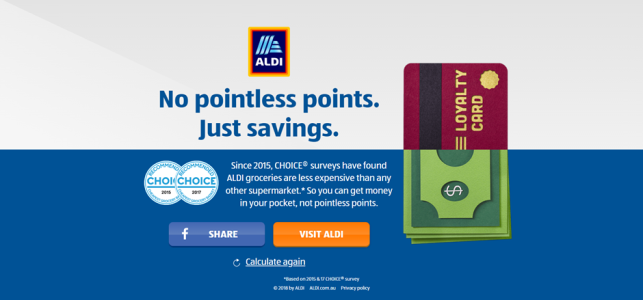You won't believe which supermarket is the cheapest in Australia!
- Replies 6
Who doesn't like to save a buck? When prices go up, it's tough for everyone, whether you're stretched thin or just trying to budget smartly.
That's why here at SDC, we're on a mission to help you out. We'll do the research so you the best places to shop and where you can find the cheapest groceries.
Recently, the team at the comparison website Finder went aisle-by-aisle through Australia's big three supermarkets—Woolworths, Coles, and ALDI—to determine which one offers the best value. ALDI came out on top, with a basket of 46 goods costing $199.69.
The total price at ALDI was 6.5% cheaper than Woolworths' $208.85 and 7% cheaper than Coles' $214.32.
The price of onions showed the most variation, with a 75% difference between retailers. One-litre bottles of lemon lime and bitters also had a 57% price difference depending on the store.
ALDI's eye fillet steaks were the most budget-friendly, costing $24.50 for a 500g portion, compared to $26 at Coles and Woolworths.
Graham Cooke, Finder's Head of Consumer Research, commented on the significant impact of rising grocery costs on family budgets.
In September 2023, the average Australian household's weekly grocery bill was $185, marking a $15 increase compared to August 2022 figures.
This jump of 8.2% poses a significant burden, especially for families on fixed incomes or low wages.
The research also found that the financial stress associated with grocery shopping has surged, affecting 42% of Australians, up from just 19% three years prior.
Food prices have soared recently, and even with slower inflation, they're a big issue for shoppers.
Cooke noted, ‘Food prices have skyrocketed over the past couple of years and despite overall inflation slowing down, high prices at the grocery store are a major pain point for consumers.’
In trying times, people naturally look to low-cost stores for essentials.
Cooke also mentioned, ‘A growing number of consumers are turning to low-cost grocery stores to find cheaper staples like eggs and bread to save funds.’
While saving money, Cooke warns that smaller supermarkets come with some trade-offs.
‘Larger supermarkets also offer a much wider range of brands, and not all the products are going to be the exact same quality.’ He added, ‘The no-frills version of your favourite products could take a bit of getting used to.’
For those hesitant to switch to no-frills options, there are alternative ways to save. Cooke suggests exploring loyalty programs and reward points.
Moreover, he recommends shopping in the evening to find items nearing expiry at discounted rates and opting for in-season fruit and vegetables for added savings.

Members, what's your take on ALDI? Do you believe it offers the best value for money? If you have any grocery shopping tips or preferred places for bargains, we'd love to hear from you. Share your insights and experiences in the comments below!
That's why here at SDC, we're on a mission to help you out. We'll do the research so you the best places to shop and where you can find the cheapest groceries.
Recently, the team at the comparison website Finder went aisle-by-aisle through Australia's big three supermarkets—Woolworths, Coles, and ALDI—to determine which one offers the best value. ALDI came out on top, with a basket of 46 goods costing $199.69.
The total price at ALDI was 6.5% cheaper than Woolworths' $208.85 and 7% cheaper than Coles' $214.32.
The price of onions showed the most variation, with a 75% difference between retailers. One-litre bottles of lemon lime and bitters also had a 57% price difference depending on the store.
ALDI's eye fillet steaks were the most budget-friendly, costing $24.50 for a 500g portion, compared to $26 at Coles and Woolworths.
Graham Cooke, Finder's Head of Consumer Research, commented on the significant impact of rising grocery costs on family budgets.
In September 2023, the average Australian household's weekly grocery bill was $185, marking a $15 increase compared to August 2022 figures.
This jump of 8.2% poses a significant burden, especially for families on fixed incomes or low wages.
The research also found that the financial stress associated with grocery shopping has surged, affecting 42% of Australians, up from just 19% three years prior.
Food prices have soared recently, and even with slower inflation, they're a big issue for shoppers.
Cooke noted, ‘Food prices have skyrocketed over the past couple of years and despite overall inflation slowing down, high prices at the grocery store are a major pain point for consumers.’
In trying times, people naturally look to low-cost stores for essentials.
Cooke also mentioned, ‘A growing number of consumers are turning to low-cost grocery stores to find cheaper staples like eggs and bread to save funds.’
While saving money, Cooke warns that smaller supermarkets come with some trade-offs.
‘Larger supermarkets also offer a much wider range of brands, and not all the products are going to be the exact same quality.’ He added, ‘The no-frills version of your favourite products could take a bit of getting used to.’
For those hesitant to switch to no-frills options, there are alternative ways to save. Cooke suggests exploring loyalty programs and reward points.
Moreover, he recommends shopping in the evening to find items nearing expiry at discounted rates and opting for in-season fruit and vegetables for added savings.
Key Takeaways
- Finder's comparison shows ALDI's 46-item basket costs $199.69, while Woolworths' is $208.85 and Coles' is $214.32.
- Prices varied greatly for different products, with onion prices showing a whopping 75% difference between retailers.
- In September 2023, the average grocery bill for Australian households rose by $15 from the previous August, totalling $185.
- Graham Cooke of Finder recommends shopping at night, buying in-season produce, and using loyalty programs to save money.
Members, what's your take on ALDI? Do you believe it offers the best value for money? If you have any grocery shopping tips or preferred places for bargains, we'd love to hear from you. Share your insights and experiences in the comments below!










